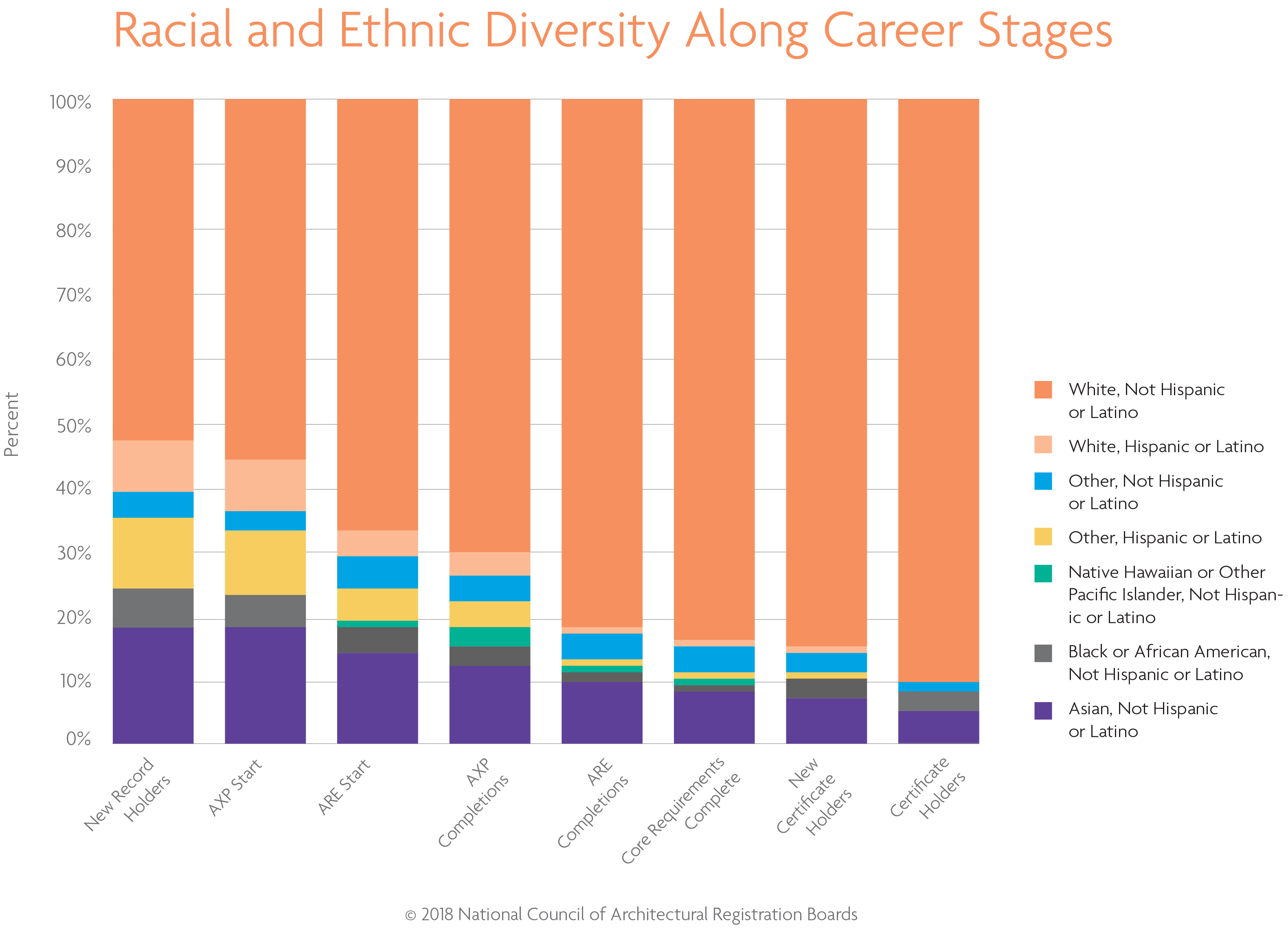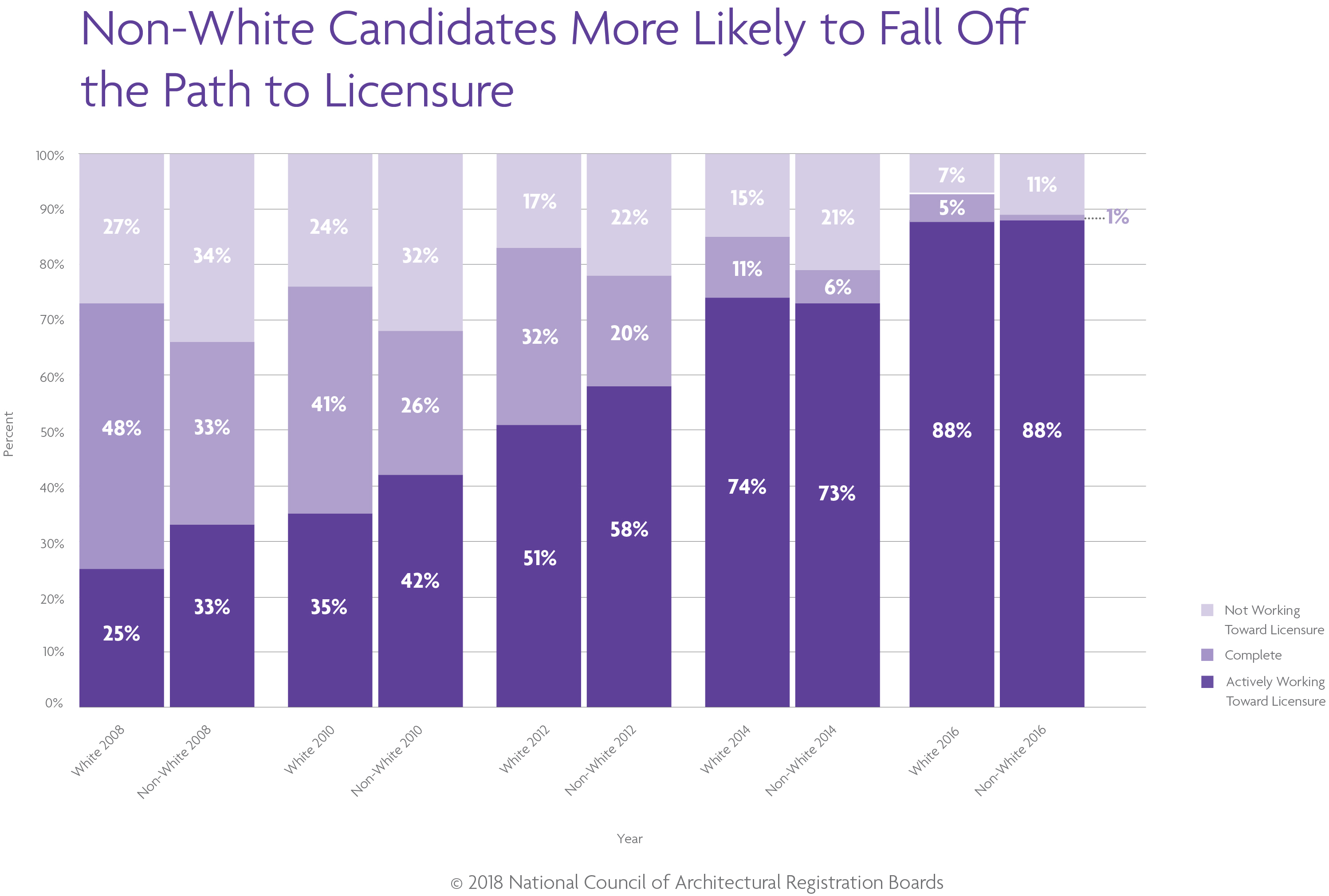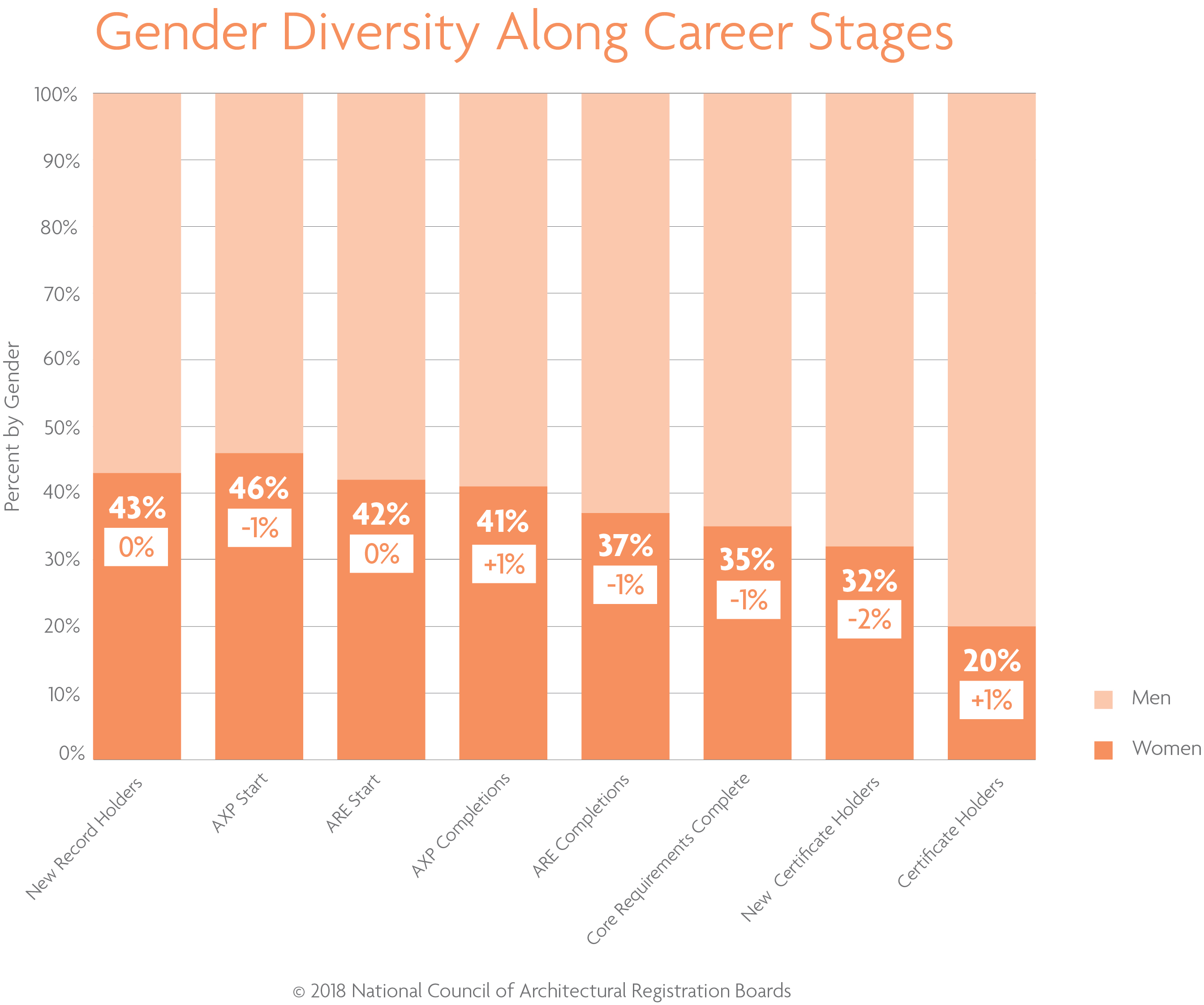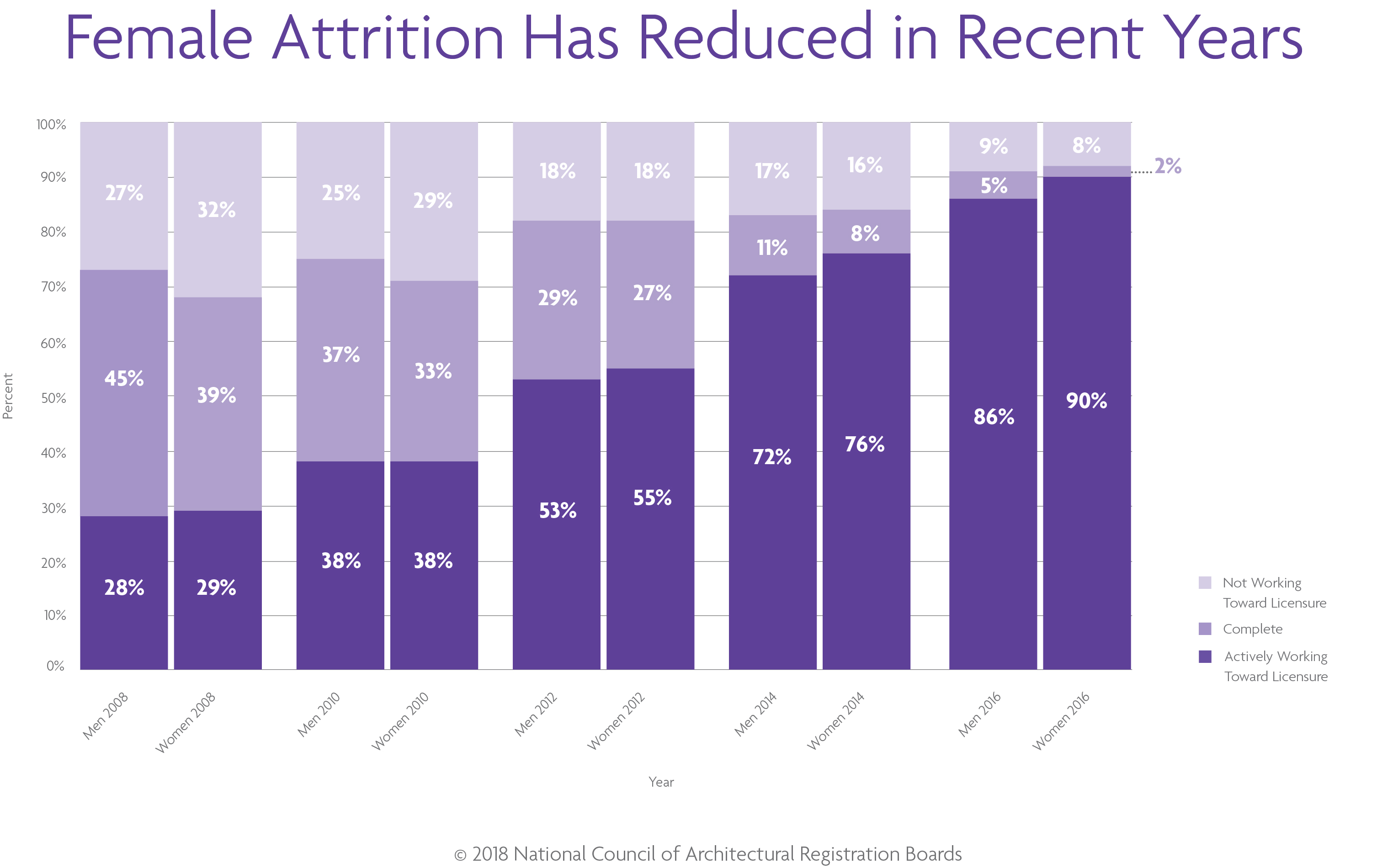While equity and diversity in the profession have been improving in recent years, new data shows that attrition along the path to licensure remains much higher for non-white individuals.
Washington, DC—Diversity among licensure candidates and new architects continues to improve, according to the 2018 edition of NCARB by the Numbers. However, new analysis from the National Council of Architectural Registration Boards (NCARB) also indicates that while non-white individuals now make up a larger percent of the profession, they also stop pursuing licensure at higher rates. Comparatively, attrition rates for men and women have evened out as the proportion of women in the profession has increased.
“NCARB has spent the past several years updating and aligning our programs to remove unnecessary burdens while maintaining the rigor needed to protect the public,” said NCARB CEO Michael Armstrong. “A key area for us to address is identifying how pinch points along the path to licensure may vary for candidates from different backgrounds.”
Racial and Ethnic Diversity
In 2017, racial and ethnic diversity continued to improve along early career stages.

Forty-five percent of new Architectural Experience Program® (AXP™) participants and 33 percent of new exam candidates identified as non-white, a three percent increase from 2016 for both groups. Individuals completing the AXP saw an even larger jump: 30 percent identified as non-white, a 5 percentage point increase.
For comparison, 34 percent of the U.S. population identifies as either non-white or Hispanic, according to 2015 statistics from the U.S. Census Bureau.

Although racial and ethnic diversity has been gradually improving in the profession, candidates who identify as non-white or Hispanic remain less likely to complete the path to licensure than candidates who identify as white.
Of non-white candidates who started their NCARB Record in 2008, 33 percent had completed the core requirements for licensure by 2017—15 percentage points less than their white counterparts. In addition, 34 percent of non-white and 27 percent of white candidates have stopped pursuing licensure. This trend continues in more recent years, with non-white candidates typically 25 percent more likely to fall off the path to licensure than their white peers.
Women and Men Reach Equal Rates of Attrition
Gender equity remained largely unchanged over the course of 2017, with minimal increases
and decreases at various career stages.

In 2017, women accounted for 46 percent of new AXP participants, 42 percent of new Architect Registration Examination® (ARE®) candidates, and 35 percent of candidates who’ve completed the core requirements for licensure. By comparison, women made up 47, 42, and 36 percent, respectively, of these groups in 2016.
And while the percentage of new Certificate holders who are women dipped to 32 percent in 2017, the percentage of all Certificate holders who are women rose to 20 percent. This is the third year of successive increase—signaling that while women remain underrepresented in the industry, gender equity is gradually improving.

Historic differences in attrition between genders have disappeared since 2012. Of those who started their NCARB Record in 2008, 32 percent of women and 27 percent of men have fallen off the path to licensure—a 5 percent gap.
The data reveals a more positive trend for women who began the path to licensure more recently. While women who started their Record in 2014 or 2016 are still less likely to have completed the path to licensure than their male peers, they are also less likely to have stopped pursuing licensure, which is a reversal from 2008 and 2010 candidates.
The 2018 edition of NCARB by the Numbers, available in July, provides exclusive insight into the number of U.S. architects, the pool of candidates working toward licensure, and diversity in the profession. To learn more about NCARB’s data, visit www.ncarb.org.
#####
About NCARB
The National Council of Architectural Registration Boards’ membership is made up of the architectural registration boards of all 50 states as well as those of the District of Columbia, Puerto Rico, Guam, and the U.S. Virgin Islands. NCARB assists its member registration boards in carrying out their duties and provides a certification program for individual architects.
NCARB protects the public health, safety, and welfare by leading the regulation of the practice of architecture through the development and application of standards for licensure and credentialing of architects. In order to achieve these goals, the Council develops and recommends standards to be required of an applicant for architectural registration; develops and recommends standards regulating the practice of architecture; provides to Member Boards a process for certifying the qualifications of an architect for registration; and represents the interests of Member Boards before public and private agencies. NCARB has established reciprocal registration for architects in the United States and Canada.
Visit: www.ncarb.org
Twitter: www.twitter.com/ncarb
Facebook: www.facebook.com/NCARB
YouTube: www.youtube.com/NCARBorg